Become a part of that history and see Seville from a new perspective canoe, paddle surf or boat trip from the Guadalquivir
By Nick Nutter | Updated 16 Mar 2022 | Seville | Places To Go |
Login to add to YOUR Favourites or Read Later
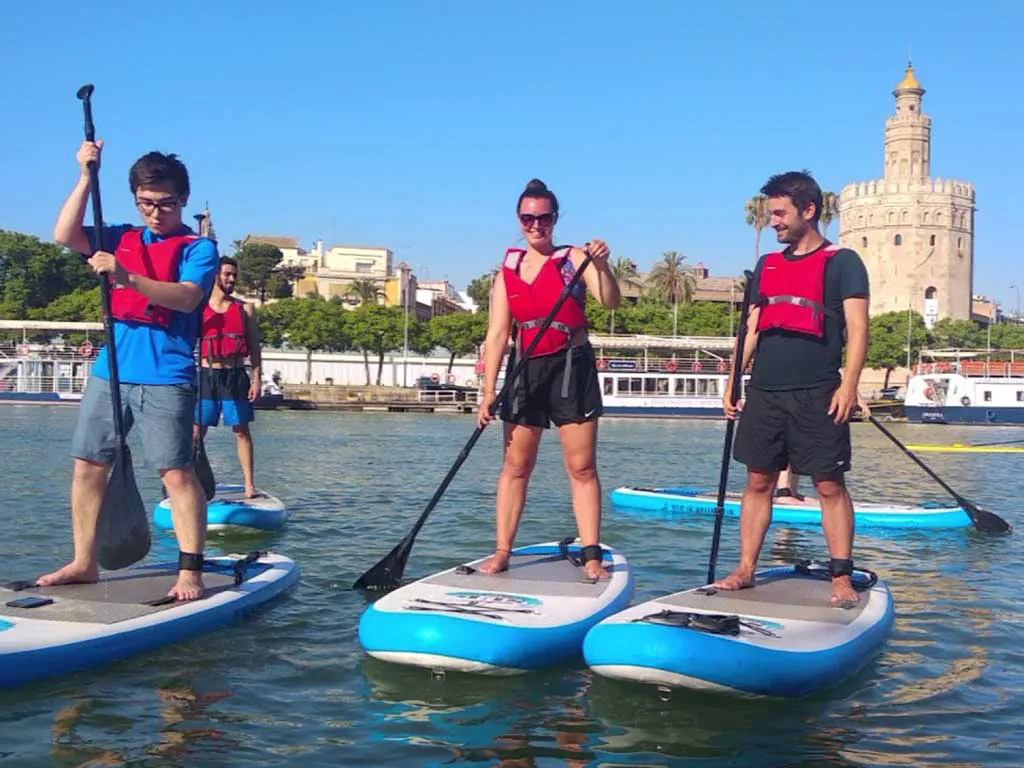
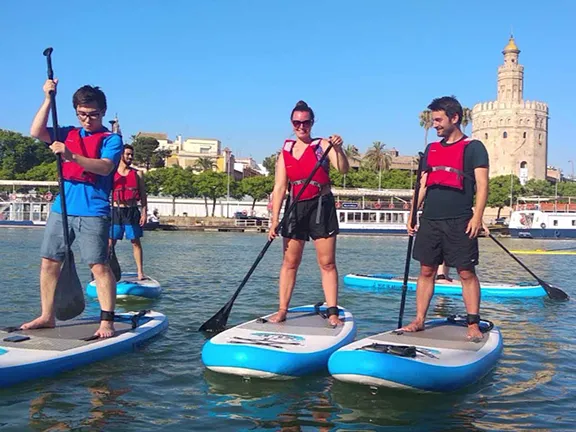
Paddle surf at Seville
The Guadalqivir, ‘the great river’, 657 kilometres long and the only great navigable river in Spain. Once upon a time you could sail from the Gulf of Cadiz to Cordoba; the Port of Seville is now the limit of navigation for large ships. The river has been important since pre-Classical times. The Tartessians called their river the Certis, the Greeks called it the ‘river of Tartessos’ and the Romans called it the Baetis. The Guadalquivir, named by the Muslims, on its long journey from the Sierra de Cazorla, across the wide plains of Jaen province, through Cordoba to the Atlantic Ocean at Sanlucar de Barrameda, passes through the equally important city of Seville. The history of the city and the river are inextricably linked. Become a part of that history and see Seville from a new perspective, the river Guadalquivir.
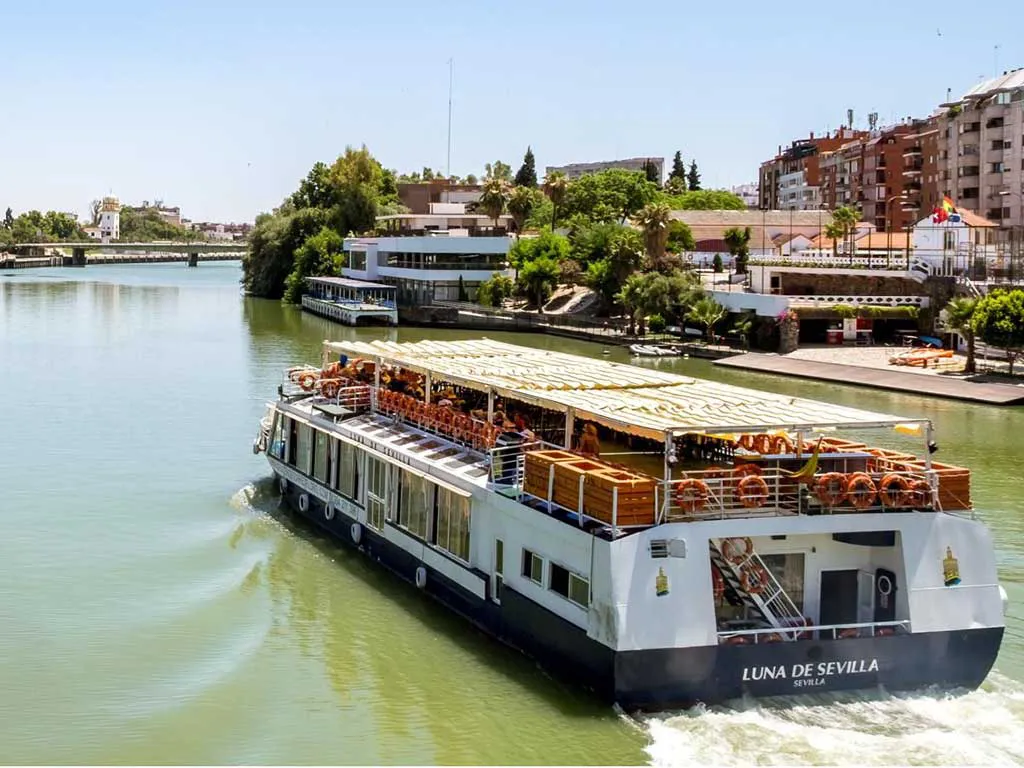
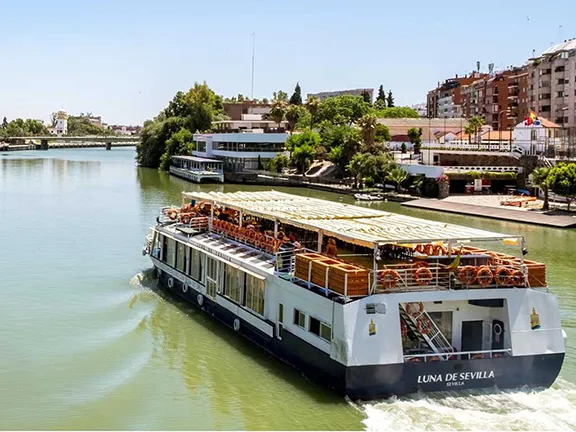
Boat Trip on the Guadalquivir at Seville
It was the Phoenicians that established the first anchorage grounds from which they dealt in precious metals with the Tartessians. In those days, the Atlantic Ocean formed a bay that reached as far as Seville. The bay was still there when the Romans arrived, unlike the Tartessians who had disappeared somewhere around 400 BC. The Romans expanded a Turdetanian settlement and called it Hispalis.
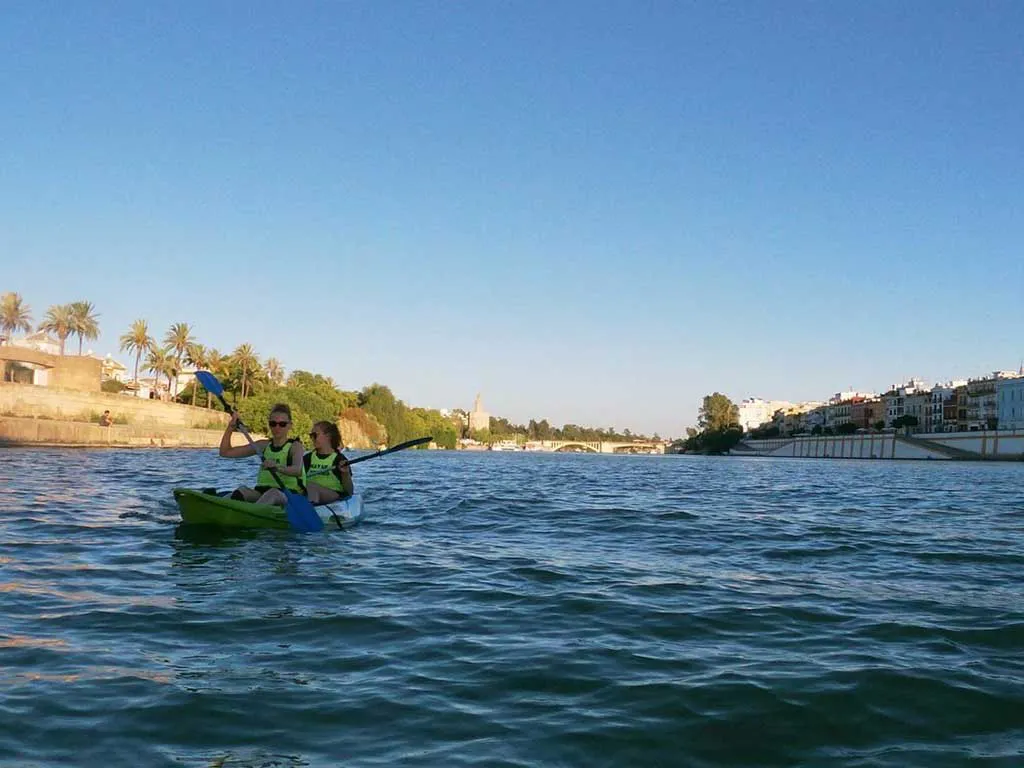
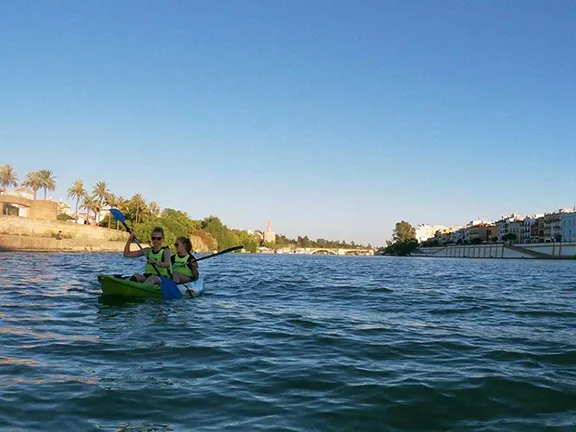
Canoe the Guadalquivir at Seville
By the 1st century BC, Hispalis was a walled city. Its boatyards built cargo vessels to carry the wheat, grown in the Guadalquivir valley, to Rome. Two hundred years later Seville was headquarters to a Roman naval squadron and the port transhipped minerals, salt, olive oil and grain throughout the Roman Empire.
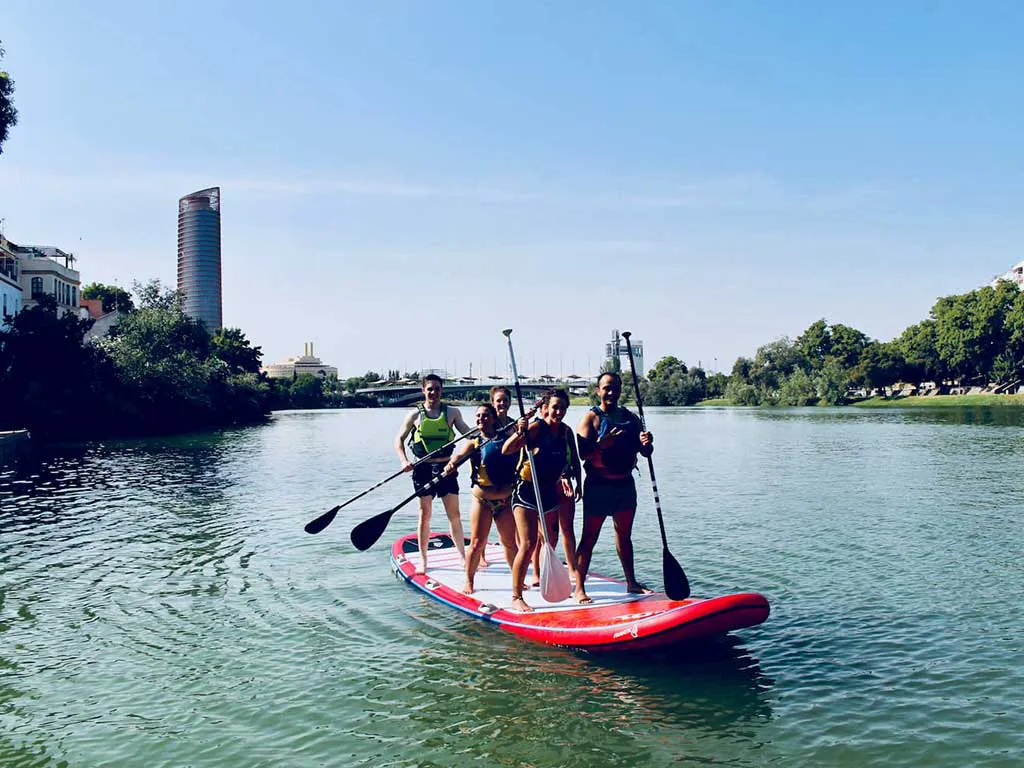
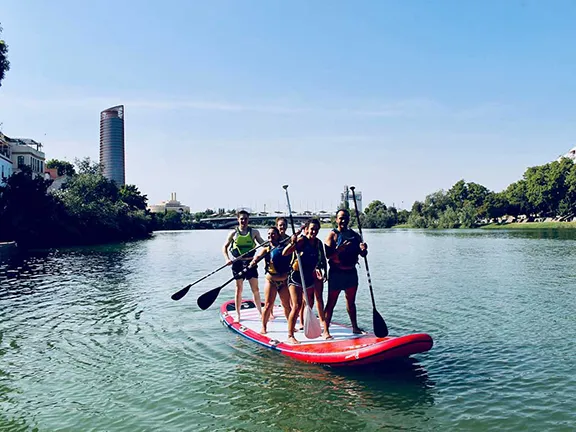
Paddle surf at Seville
The Muslims arrived in 711 AD and built a stone dock. Produce from Isbiliya was taken to all points of the Muslim Empire. By that time the Atlantic had retreated as the estuary of the Guadalquivir silted and the coastline began to assume its current form.
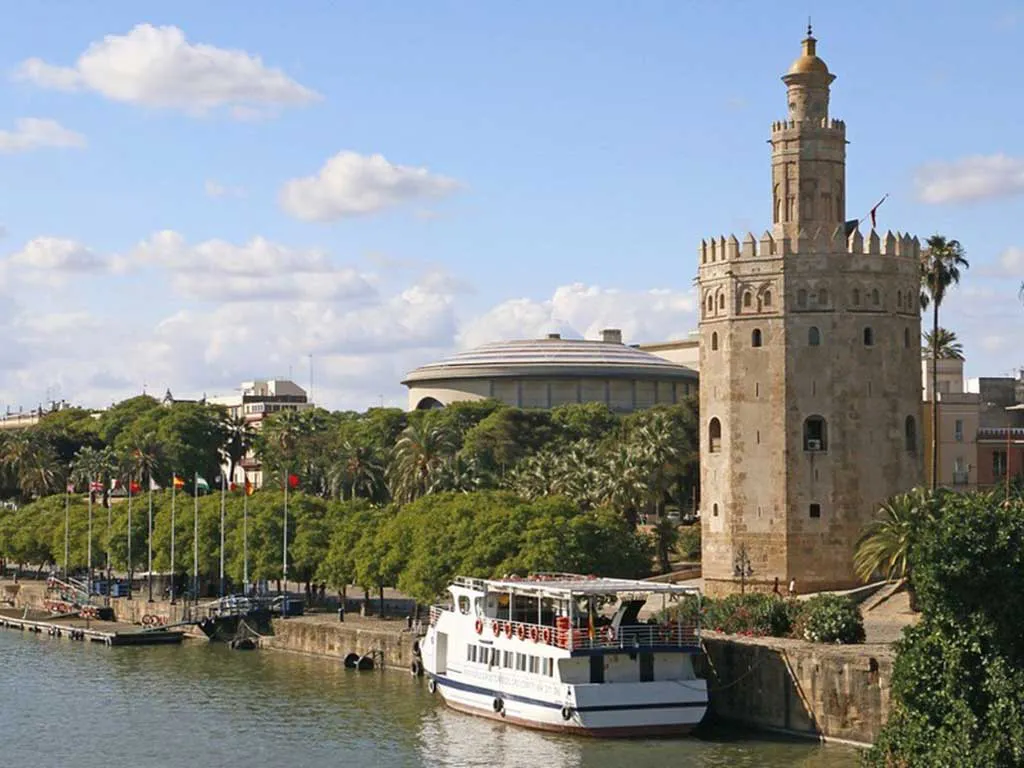
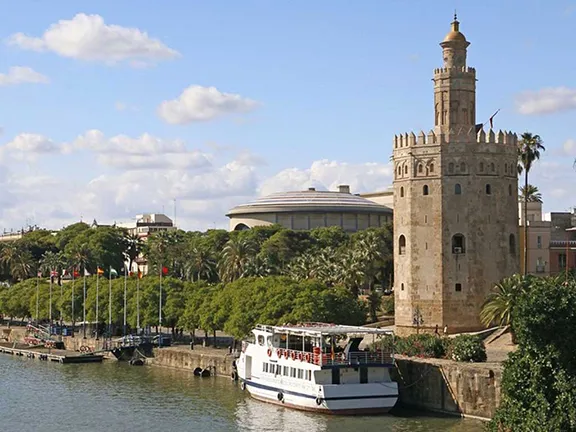
Boat Trip on the Guadalquivir at Seville
In 844 AD, the Vikings arrived and sacked Isbiliya. They occupied the city and its environs for about a month before being ejected by Emir Abd ar-Rahman II. Isbiliya was the capital for the kings of the Umayyad Caliphate, the Almoravid dynasty and after the Almohad dynasty from the 8th to 13th centuries and it was during this time, 1220, that the famous Torre del Oro watchtower was built to protect the port from the Christian forces intent on re-occupying al-Andalus.
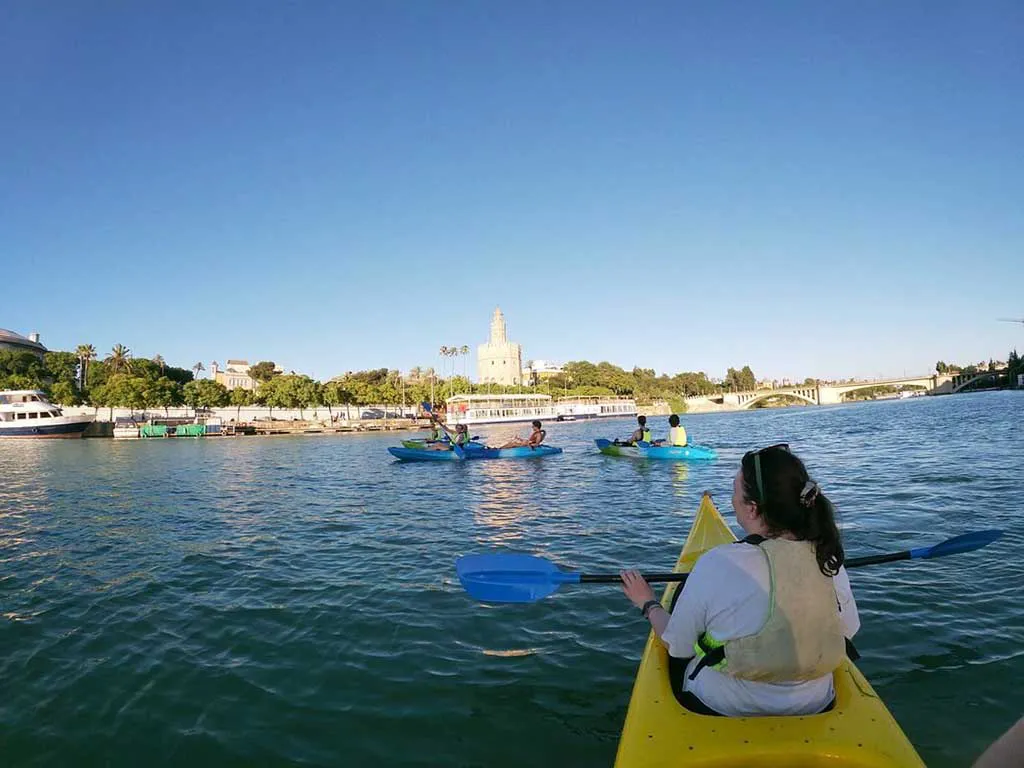
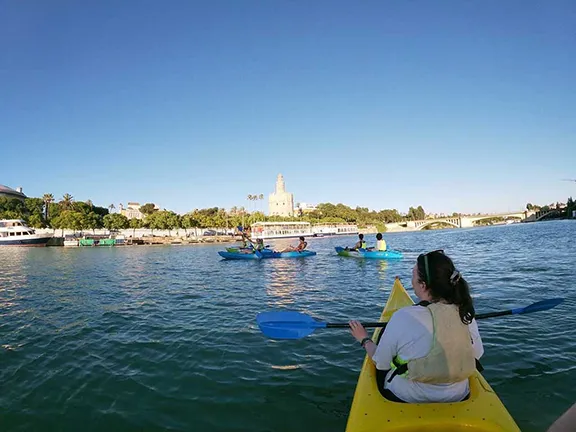
Canoe the Guadalquivir at Seville
The Christians took Seville in 1248 and during the 13th century Ferdinand III expanded the shipyards. Grain, oil, wine, wool, leather, cheese, honey, wax, nuts and dried fruit, salted fish, metal, silk, linen and dye were exported throughout Europe.
Following the discovery of the Americas, Seville became the economic centre of the expanding Spanish Empire, monopolizing the trans-Atlantic trade. As the river continued to silt up, Cadiz gained that monopoly, despite the construction of the canal, the Corta de Merlina, in 1794. It was not until 2010, after five years work, that the new Seville lock designed to regulate the tides, opened.
Kayaking the river at Seville allows you to see this history for yourself. The new lock means that the waters are non-tidal, the river’s flow is gentle. Paddle beneath the famous bridges and alongside the ancient waterfront. See Seville from a different perspective. Kayaking expeditions generally last 2 to 3 hours and are suitable for all the family and for canoeists of all levels of experience.
Alternatively, if you do not want the exertion, why not take a one hour boat trip on the Rio Guadalquivir. Cruise past the iconic landmarks in comfort whilst enjoying the facilities of the on board bar and cafeteria.
For something new, try paddle surfing on the Guadalquivir at Seville. You will see all the points of interest, Torre de Sevilla, Puente de Triana, Real Maestranza and the Torre del Oro.